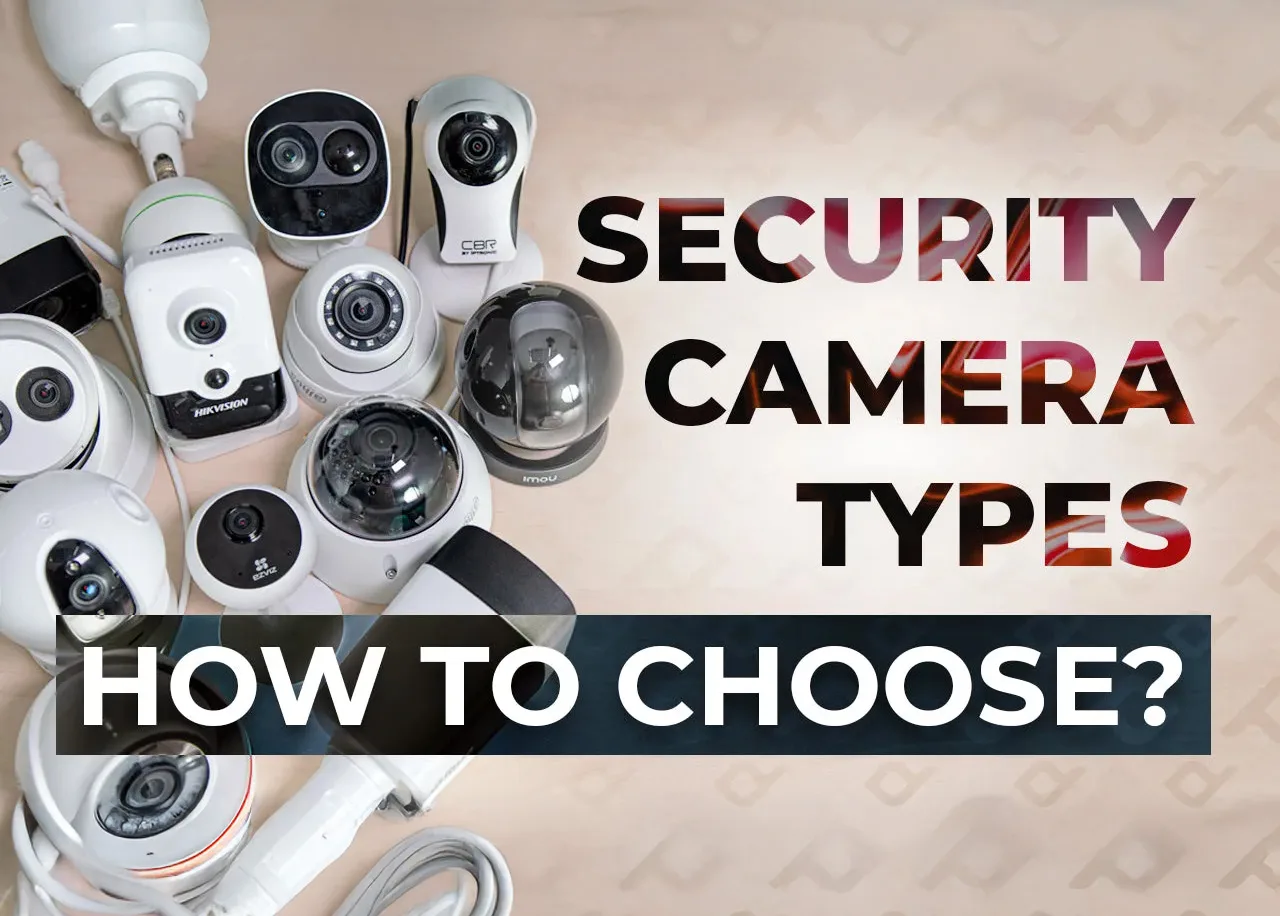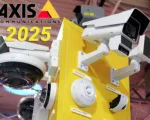A typical question we often hear is “What Type Of Security Camera Do I Choose?”
This concern is quite common and goes hand in hand with the following: How do I select a suitable camera when the market has so many options, and what do all these features mean? Should it be wired or wireless, and how do outdoor and indoor specifications differ? There are numerous questions if you’re not familiar with security camera types or the category technology in general. The goal of this material is to answer these uncertainties in a compact yet comprehensive way.
One method to figure out how to choose security camera equipment is to ask yourself a set of relevant questions. These reflect what a specialist would ask over a call to pinpoint exactly what a customer needs. The main questions are:
1. Type of Data Transmission: Analog or Network-based?
2. The Install Location:
-
- Camera body type
- Weather conditions
- Use scenarios
3. Features / Additional features / Smart functions:
-
- Passive IR Sensor or Software-level Motion Detection
- Wi-fi data transmission comparison
- Battery-powered
- IR night vision
- Pan-tilt-zoom and pan-tilt
- Abnormal sound detection
- Line crossing and region protection
- Face detection and face recognition
Do you need those?
1. Analog or Network-based?
Let’s begin with the basics: choosing between an analog camera or a network camera. Essentially, this is about the process of data transmission. An analog camera simply captures footage and sends it over a coaxial cable to a DVR (Digital Video Recorder), which processes the video. You can watch the live feed directly from the DVR, and it can forward footage over a network to a phone or computer.
By contrast, a network camera (often called an IP camera) captures and processes video on its own. It’s a standalone network device with its own IP address, capable of saving footage internally (if it supports a MicroSD card), as well as sending video to phones, PCs, or other network devices. Typically, analog devices cost less, whereas network models provide more advanced features, higher resolutions, and greater flexibility—though they can experience slight delays due to processing.
Analog Camera System:
-
- More affordable overall
- Zero network-related delay when viewing via DVR
- Minimal image interference
- Requires a DVR
- Limited smart functionality
- Longer cable range (500–800 m)
- Harder to upgrade to new features
- Lower maximum resolution
- A longstanding, reliable option
Network Camera System:
-
- Typically 1.5x or more expensive than analog
- Doesn’t necessarily require a dedicated recorder
- Direct feed to phones, computers, or other network devices
- Can store video locally on MicroSD (if the camera supports it)
- Possible video issues if network quality is poor
- Greater expandability and upgrades
- Higher resolutions and better image clarity
- Extensive smart functionality (motion analytics, face detection, and more)
- Standard cable range up to 100 m (extenders needed for more distance)
- Various options: battery-driven, Wi-Fi-based, wired, PTZ, fisheye lens, etc.
- Increased bandwidth and internet usage
- Extremely modern approach to video surveillance
In summary, an analog camera must pair with a DVR, whereas a network camera can operate on its own. One distinct benefit of analog is no inherent streaming lag, since the DVR directly handles all processing. IP or network cameras handle image encoding themselves, so there is often a brief delay. A big advantage of analog is that coaxial cables can stretch hundreds of meters without loss, while IP-based systems typically use twisted pair cables limited to around 100 meters by default—though range extenders exist. Nevertheless, network solutions offer far more robust smart features and allow for large-scale home camera system setups or business video surveillance. If you want higher resolution and advanced functions, a network camera is often the way to go.
2. The Install Location – Body Type / Weather Condition / Use Scenarios
After deciding on analog or network, the next question revolves around where you plan to install the camera. This aspect influences the body type, weather rating, and use scenarios. Outdoor, indoor, bullet security camera, dome security camera, turret security camera, or cube security camera—the variety is huge, but the essential distinction is whether a camera’s body is protected against harsh conditions. Features like Wi-fi connectivity, battery operation, floodlight capabilities, or pan-tilt-zoom are added options that depend on your individual needs and environment.
The IP (Ingress Protection) rating is a key spec for outdoor surveillance cameras, just as most modern smartphones have IP67 or IP68 ratings for water and dust resistance. Generally, an IP65 or IP66 rating is considered the threshold for an outdoor security camera. Another factor is IK, or vandal resistance, which gauges how much physical impact the camera body can withstand. Sometimes this is crucial (e.g., in public spaces), but not always essential if the camera is mounted out of reach. Cameras can also be metal or plastic; plastic might be cheaper but won’t tolerate direct impacts as well.
3. Features / Additional features / Smart functions>
Wireless (Wi-fi) home security cameras can be convenient for indoor and mild outdoor climates, but harsh weather can cause disconnections, and high-resolution recording can congest your home network. For those who prefer added deterrence, some cameras come with built-in floodlights or sirens, usually requiring more power but offering extra security benefits.
A PIR (Passive Infrared) sensor is another important feature. It detects body heat and significantly reduces false alarms compared to software-based motion detection alone. Although adding a PIR sensor can raise costs slightly, it enhances accuracy.
Battery-powered models eliminate cables and can pair with Wi-fi for full wireless convenience. However, extremely high or low temperatures can degrade battery performance. If you live in a region with harsh winter conditions, a battery-powered home security camera might struggle.
PTZ stands for Pan, Tilt, and Zoom. Such cameras can rotate horizontally and vertically, and often include optical zoom to enlarge images with minimal quality loss. They’re usually seen in professional contexts due to cost and complexity, but there are also simpler PT (pan-tilt) cameras for home security cameras. These let you move the lens in real time via an app, ensuring a broad monitoring area.
Night vision is another key element of any security camera tutorial. Outdoor models tend to have stronger infrared (IR) LEDs, giving them better visibility in darkness—some can reach 10, 20, or even 30 meters. This is essential if you need reliable video surveillance at night or in poorly lit areas.
As for smart features, common capabilities include line crossing, region protection, face detection, motion alerts, and abnormal sound detection. Face detection is sometimes confused with face recognition; detection only identifies a human face rather than an object, helping reduce false alarms. Meanwhile, line crossing and region protection let you designate specific boundaries where, if crossed, the camera triggers an alert. These functions often come at an entry-level price point for many security cameras.
When you’re ready to choose security camera options—be it analog or network, indoor dome security camera, outdoor bullet security camera, turret security camera, cube security camera for everyday usage, or more advanced home security systems—keep in mind the environment, potential weather challenges, and any additional functionality you might need. Professional guidance can help you avoid mismatched purchases and save time. If you feel unsure, consider consulting a security camera guide or talking to a specialist.


























